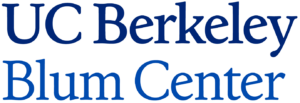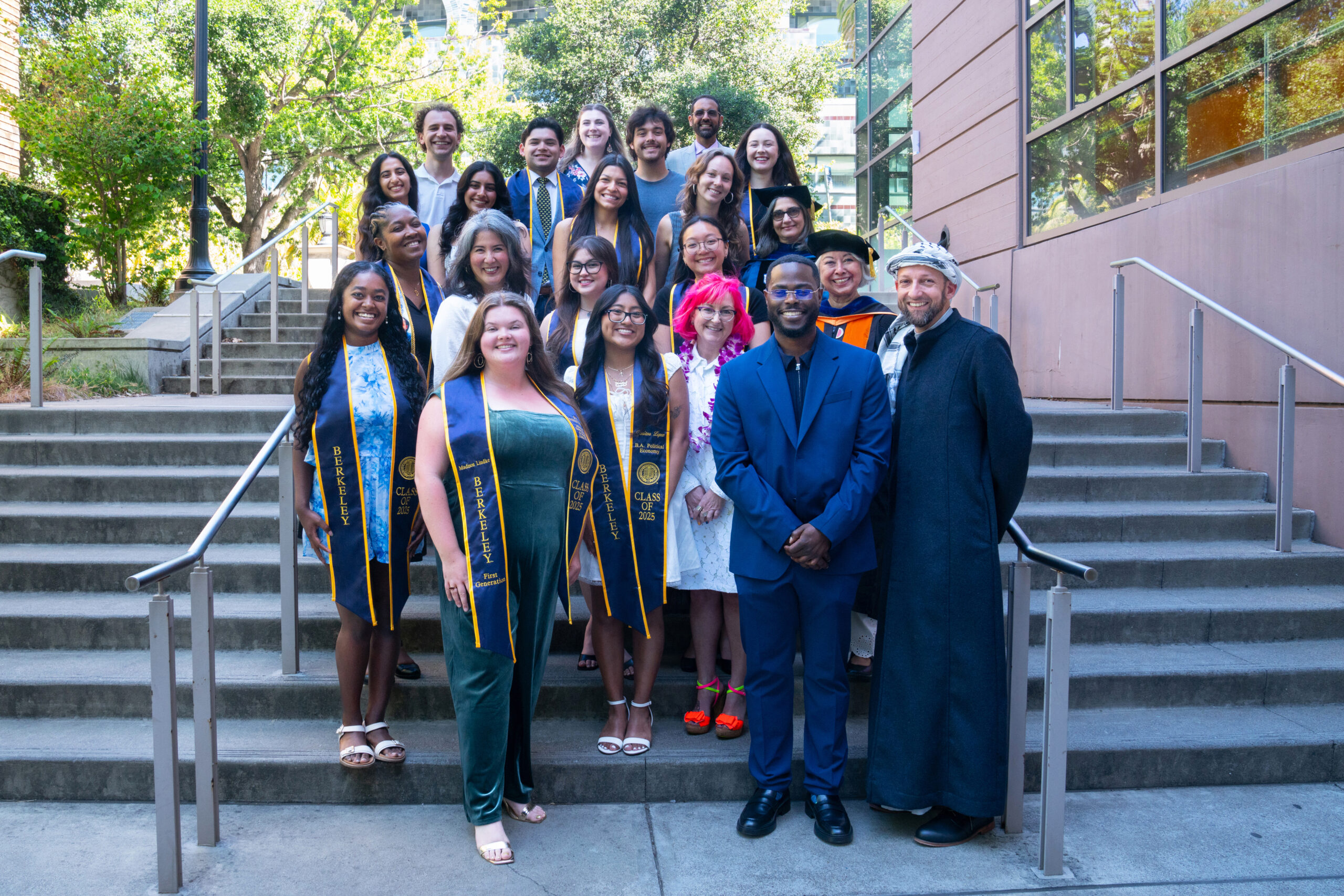By Tamara Straus
Ten years ago, Scott Zimmermann left a career as an oil industry engineer to attend law school at UC Berkeley, retool, and try to save the planet. Al Gore’s “An Inconvenient Truth” was just about to come out, and the nation was buzzing with newfound information on the connections between fossil fuel consumption and climate change. Zimmermann said he chose Berkeley because “it was easily the best place in the country for people working on interdisciplinary climate mitigation solutions, especially in the energy space. Virtually every department across campus was making important contributions to climate change research.”
Zimmermann took some good early steps. First, he got Professor Daniel Kammen to serve as his advisor. Kammen had a triple appointment at the Goldman School of Public Policy, the Energy & Resources Group, and the Nuclear Engineering Department, and recently had been named Class of 1935 Distinguished Chair in Energy and co-director of the Berkeley Institute of the Environment. He was also about to win the Nobel Peace Prize as a contributing lead to the Intergovernmental Panel on Climate Change.
Second, Zimmermann met a Berkeley attorney and activist by the name of Tom Kelly. In 2004, Kelly and his wife Jane had started Kyoto USA, a nonprofit to get local jurisdictions to abide to the carbon caps laid out in the Kyoto Protocol. Kelly wanted to institute the caps that the U.S. government wouldn’t at UC Berkeley, and according to Zimmermann, “It fit really, really well within the university and its politics.”
The state also was moving where the federal government refused on climate change policy. California Assembly Member Fran Pavley presented AB32, which would soon become the 2006 California Global Warming Act, the first law of its kind in the country. It would require California to reduce its greenhouse gas emissions to 1990 levels by 2020.
Kammen, Zimmermann, Kelly, and two other graduate students from the College of Natural Resources—Brooke Owyang and Eli Yewdall—decided that the UC Berkeley should commit to the same reductions and, if possible, get ahead of them to prove the university’s leadership in environmental sustainability. They drafted a letter to Chancellor Robert Birgeneau, gathered signatures from 13 professors, lecturers, and deans as well as from Professor Cathy Koshland, vice provost for academic planning and facilities, and requested that the administration “formally endorse the Kyoto Protocol and adopt its underlying principles.” The administration replied with a challenge: to put together a feasibility plan.
“Getting a university to commit to and administrate this kind of goal is not just a really interesting political problem,” remembers Zimmermann. “It’s also a really interesting technical problem.” The first technical problem was quantifying the actual on-campus emissions and understanding them in terms of transportation, consumption, waste, electricity, and so on. The second problem was figuring out how to reduce the emissions through technology, behavior, and other methods.
To tackle these problems, a student-faculty-staff group called the Cal Climate Action Partnership (CalCAP) was formed. As usual, money was scarce. Zimmermann and fellow students Brooke Owang, Sasha Gennet, and Sam Arons applied for a BigIdeas@Berkeley prize and won $5,000, enough to pay a student group to measure the campus’ carbon footprint. Student oversight came from Kammen, Civil and Environmental Engineering Professor Arpad Horvath, Energy & Resources Group Chair William Nazaroff, and 10 other faculty, all of whom were doing cutting-edge work on emissions analysis and technology. Fahmida Ahmed, a recent graduate of UC Santa Barbara’s environmental science and management program, was hired to manage the process. And for 18 months, momentum grew. There were large department and school head meetings, and many hours volunteered from every corner of the campus.
By the spring of 2007, CalCAP was done with its reporting and placed a 117-page plan on the desk of Chancellor Robert J. Birgeneau. He signed it, even though Nathan Brostrom, the vice chancellor of administration, didn’t know where about half the money was going to come from.
“This was one of the most collaborative efforts of students, faculty, and staff I’ve ever seen or been involved in,” remembers Koshland. “It happened because we had a multi-pronged strategy and an amazing group of graduate students who led the charge.”
Koshland went on to chair the CalCAP steering committee, comprised of a 35-member group and overseen by the UC Berkeley Office of Sustainability & Energy. In its first few years, CalCAP produced detailed reports on the path to meet carbon reduction goals and the mechanisms to report the emissions, including the 2009 Sustainability Plan and Climate Action Plan. The efforts led to hundreds of projects across campus on energy efficiency, transportation, procurement, water, and travel. And at each stage, the projects were individually evaluated for feasibility and measured for goal completion.
Kira Stoll, who became involved in CalCAP in 2006 as transportation staff and is now the campus’ sustainability manager, said that one of the largest efforts has focused on buildings, which account for 39 percent of C02 emissions in the United States. There were plenty of surprises. For example, Stoll and her colleagues originally assumed that there wouldn’t be much financial payback from lighting retrofits. “But what we found through tracking those projects,” says Stoll, “is that we were getting 60 percent faster better payback.”
In 2012, the Office of Sustainability launched the Energy Management Initiative, including a campaign called My Power. My Power is a simple behavioral program that has incentivized Cal departments to reduce emissions by showing them detailed reports of how much energy they use—and then giving them money back, if they go below specific targets. Stoll reports that the Energy Management Initiative has saved UC Berkeley more than $2 million since it was launched.
Also part of the Energy Management Initiative is a platform called Energy Office, which aggregates 100 real-time energy dashboards that change on 15-minute intervals. In 2012, Assistant Professor Duncan Callaway and his class noticed an inexplicable bump up of energy use on Barrows Hall’s dashboard, and notified the Energy Office. Stoll says her colleagues used the dashboard software to sort through possible causes of the increased use. They quickly found an equipment problem, went to the building, and resolved it. The avoided annual energy costs to Cal were up to $45,000.
By November 2013, UC Berkeley announced it had reduced its carbon footprint to 1990 levels. The CalCAP-initiated goal was met two years ahead of schedule and beat the state the deadline by eight years. Because of its data management, CalCAP knew exactly how and why goals were met. It gave three main reasons. First, through energy efficiency investments, building retrofits, and sustainable transportation practices, the university saved 20 million kilowatt hours of electricity and 1 million gallons of fuel. Second, Pacific Gas & Electric, which provides the campus electricity and is required by state law to provide 33 percent renewable energy mix by 2020, helped out in reducing emissions as it began to replace coal and oil with wind and sun energy. And third, and perhaps most instructive, reductions came through improved data and reporting methods.
“This shows that if you don’t measure it, it’s incredibly hard not only to act on it but to have a substantive conversation,” says Kammen. “You really need to have targets and goals. Setting them—doing the analysis to figure them out, and then doing the measurement work and adjusting—is what CalCAP has proved.”
Kammen is speaking not just about UC Berkeley’s first set of carbon emissions goals—but about the next set of goals, which UC President Janet Napolitano announced in November 2013. They demand that the entire University of California system commit to carbon neutrality by 2025.
Matt St. Clair, who was part of the original CalCAP team and who in 2004 became the first sustainability director for the University of California’s Office of the President, believes the goals are reachable but there are plenty of challenges ahead. “Energy efficiency is hard work and complex and requires investment,” says St. Clair. “We’ve done a lot of it, and we plan to do a lot more. We also don’t want to rely just on supply side solutions, where we use as much energy as we want because we can directly procure carbon-free sources of energy. That’s a big, ongoing challenge.”
Both St. Clair and Stoll say that UC Berkeley reached its first carbon reduction goals in part by grabbing at low-hanging fruit: cost-effective methods that were as dependent on behavioral changes as much as on new technologies. What the University of California needs now, they say, is financial investment and continued ingenuity.
“We really need to find a way to finance new renewable energy initiatives,” says Stoll. “The technology is available, so it’s feasible if we can find the finances for it and do it in a 10-year time frame.”
Stoll mentions that Stanford University is about to finish a $438 million electric heat recovery system to replace its cogeneration plant. The new Stanford Energy Systems Innovation project is expected to reduce carbon emissions by 68 percent and save the university an estimated $300 million over the next 35 years. Of course, these kinds of upfront costs are not something the University of California can contemplate in the midst of the budget crisis.
Stoll and St. Clair say there are other tactics UC might employ, including purchasing more solar and wind power from energy wholesalers and developing a biomethane substitute for natural gas.
“What’s exciting about a system-wide carbon neutrality policy and office of sustainability,” says St. Clair, “is that each campus has its own strengths that the others can learn from.”
St. Clair notes that Berkeley was the first to do a climate action plan, which his office used to help the other nine campuses develop their own plans. Whereas, UC Santa Barbara pioneered green building efforts with the country’s first Platinum LEED certified building, and UC Irvine developed a smart laboratory program, through which it has retrofitted more than a dozen laboratory buildings and cut energy consumption in those buildings by on average 60 percent, becoming a national and international model.
This year, Costa Rica became the first nation to use only clean energy. The country’s state utility company announced in late March that it went the first 75 days of 2015 without using fossil fuels like coal or oil for electricity, and expects to rely on renewable energy for more than 95 percent of its electricity for the remainder of the year.
Can the University of California one-up this hydropower-reliant country and achieve carbon neutrality by 2025? For many involved, it’s the ultimate hot potato question. Daniel Kammen, however, says the answer is “unambiguously yes.”
“It sounds like a revolutionary number to make the energy system carbon free by 2025,” says Kammen. “But if the UC system can really innovate and use its physical campuses as living laboratories, I think it’s absolutely doable. What it will take is a scale-up in efficiency—solar, wind, biomass, geothermal—that we have been talking about for a while. Ten years is an incredibly tight timetable. It makes you gasp a little. But we’ve seen these transitions happen on this scale already.”
Scott Zimmermann, Kammen’s former student who is now an energy lawyer at the San Francisco firm of Wilson Sonsini Goodrich & Rosati, argues that getting to carbon neutrality is a bigger step. “It’s not something you can necessarily do while saving money,” he says. “The earlier steps at UC Berkeley were easier because they enabled departments to save money. Now, if there’s extra money, the question is: Do you put the money into carbon reducing facilities or hire another professor? Those decisions are harder to make.”



